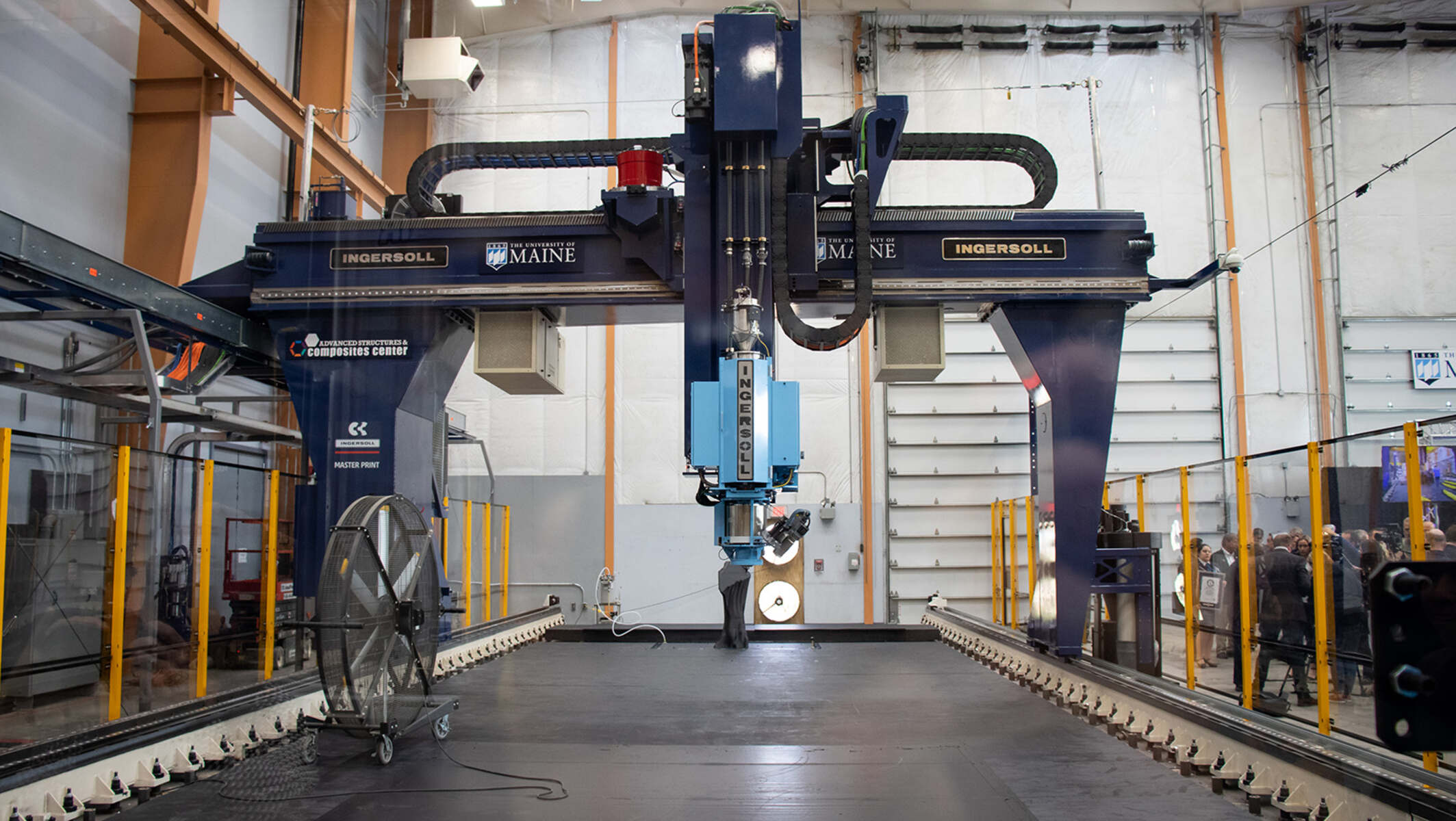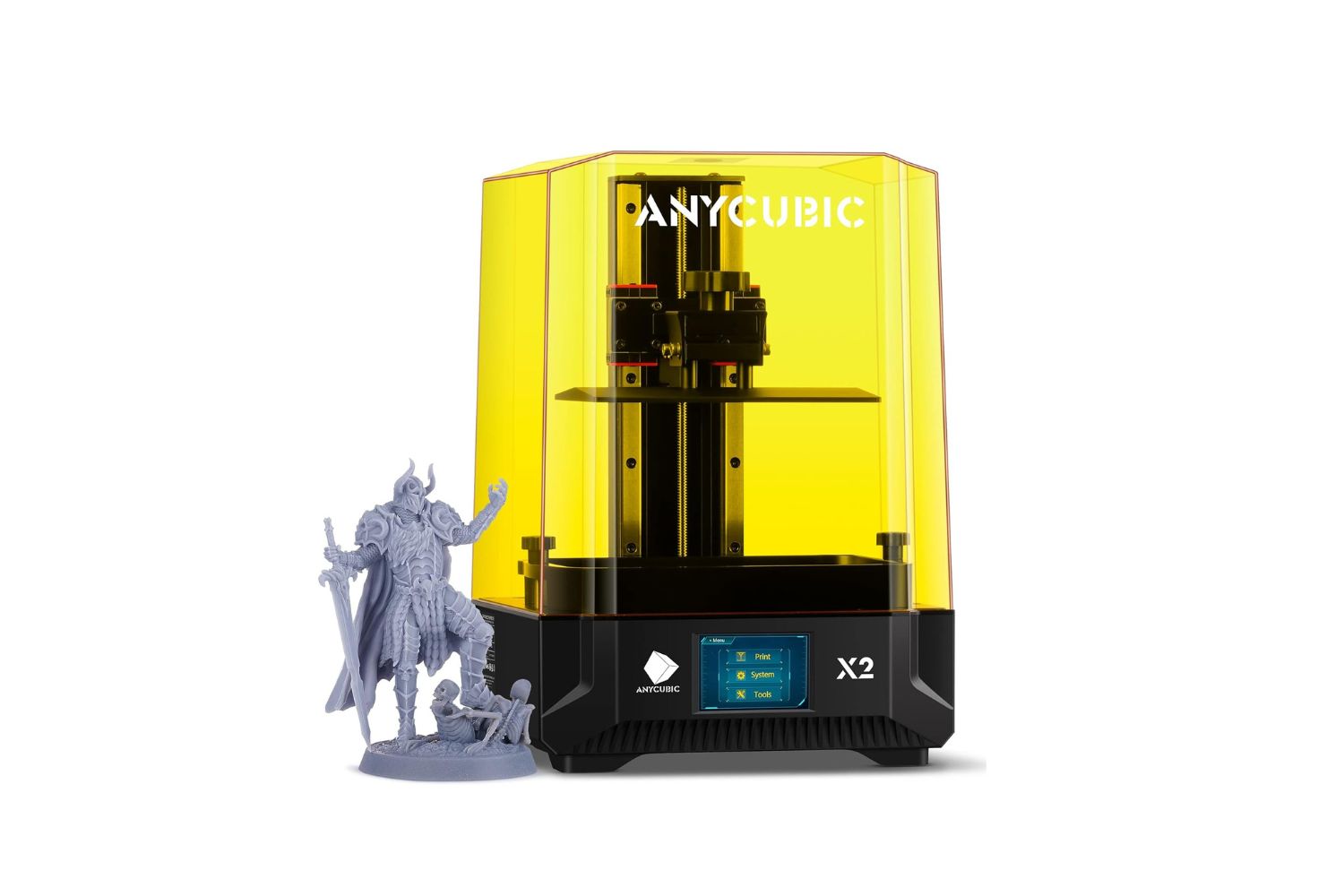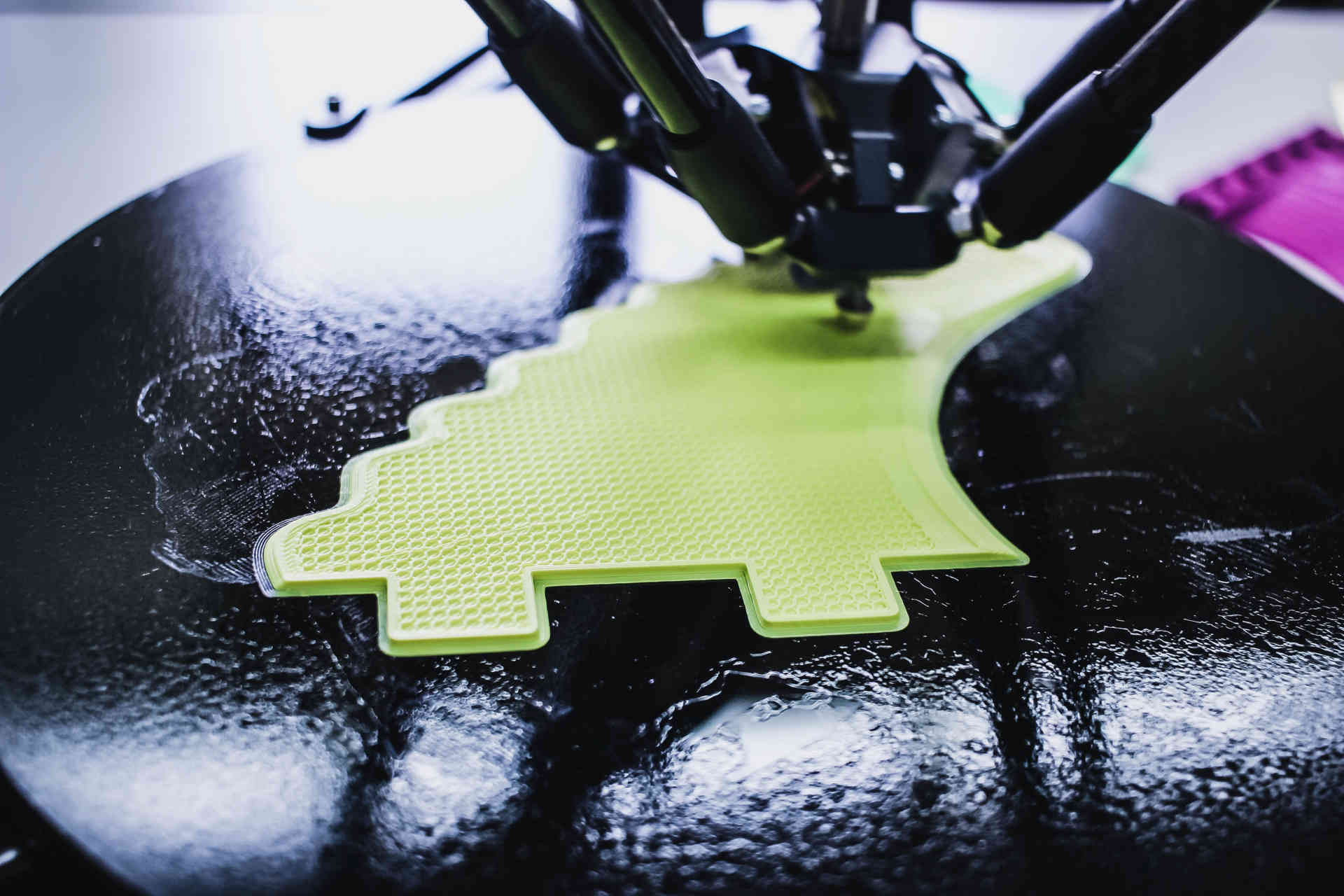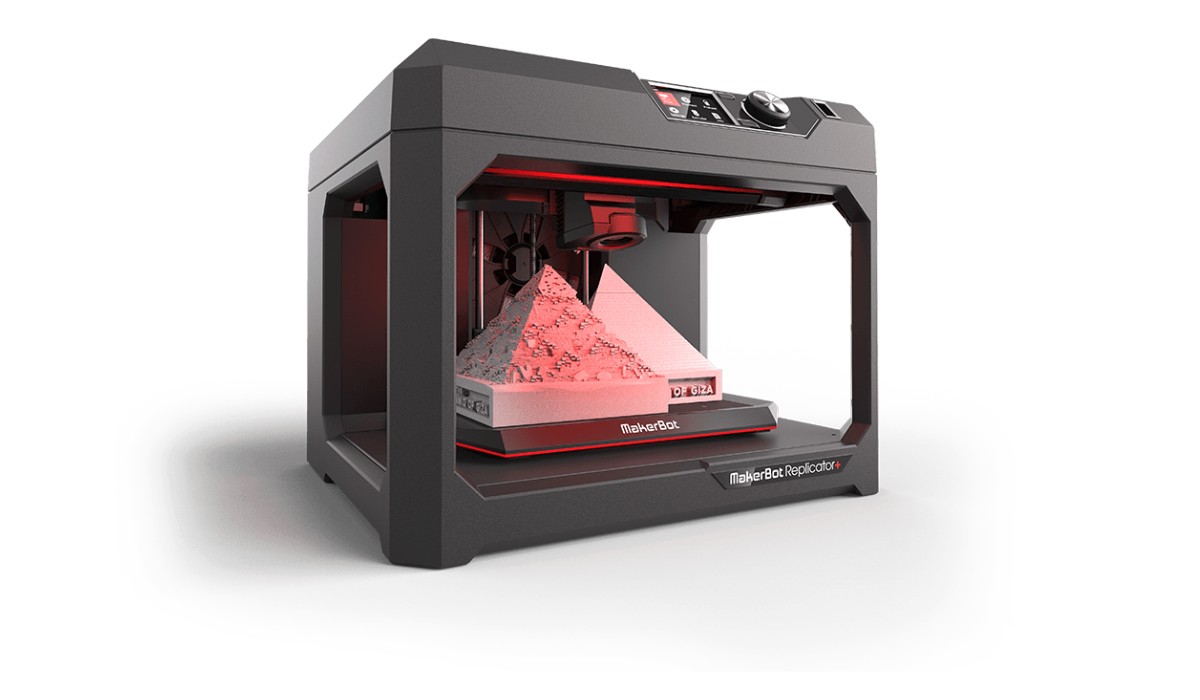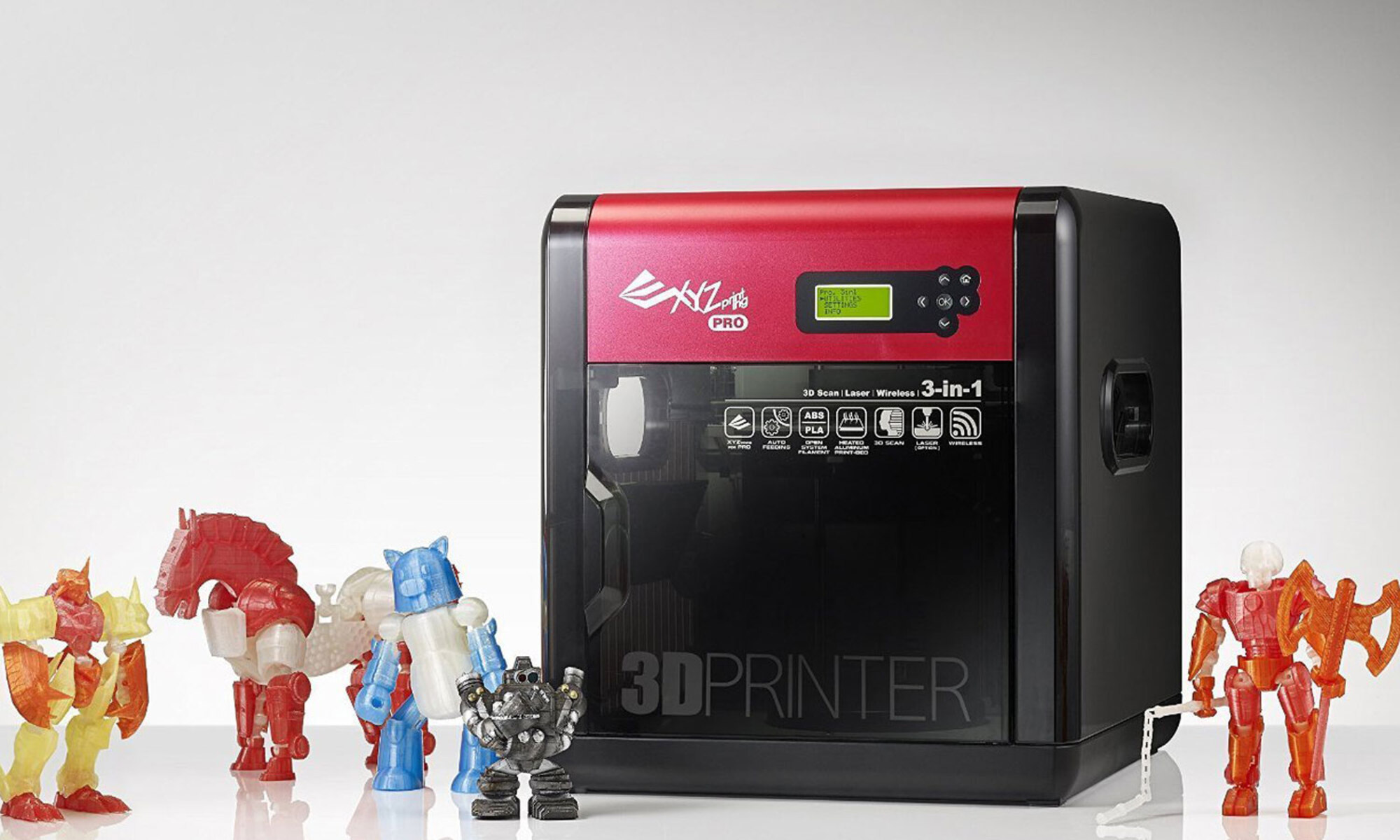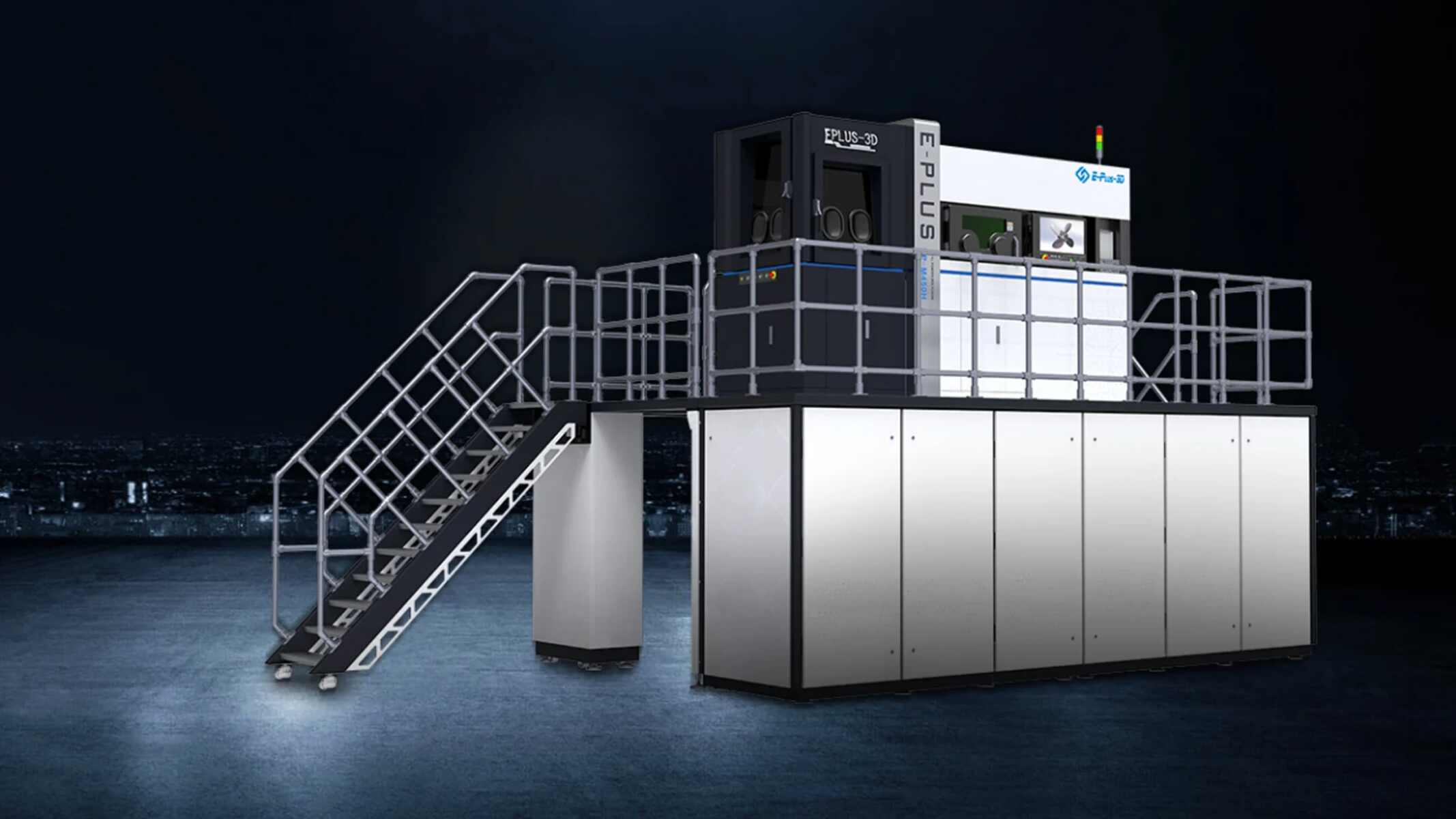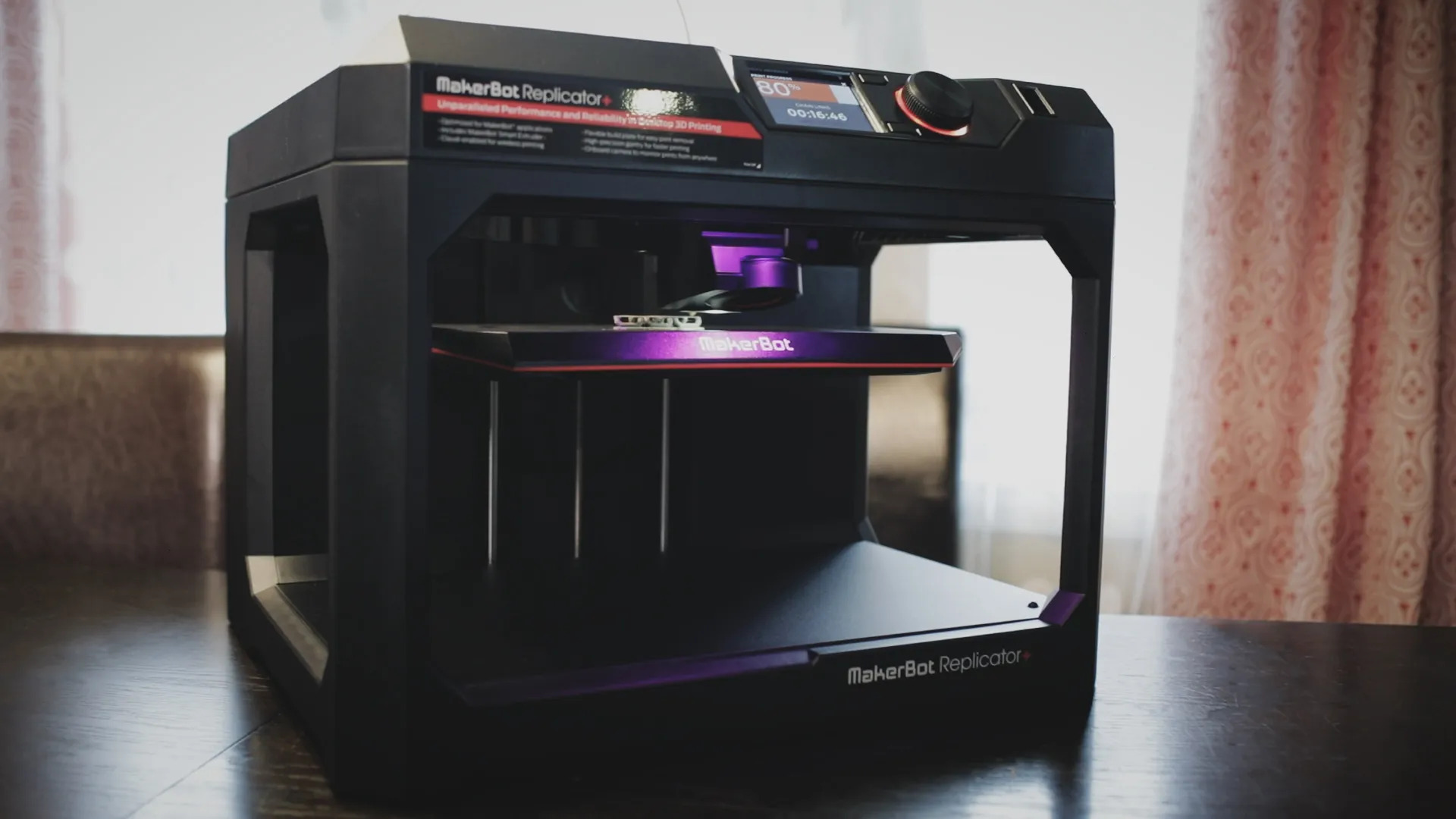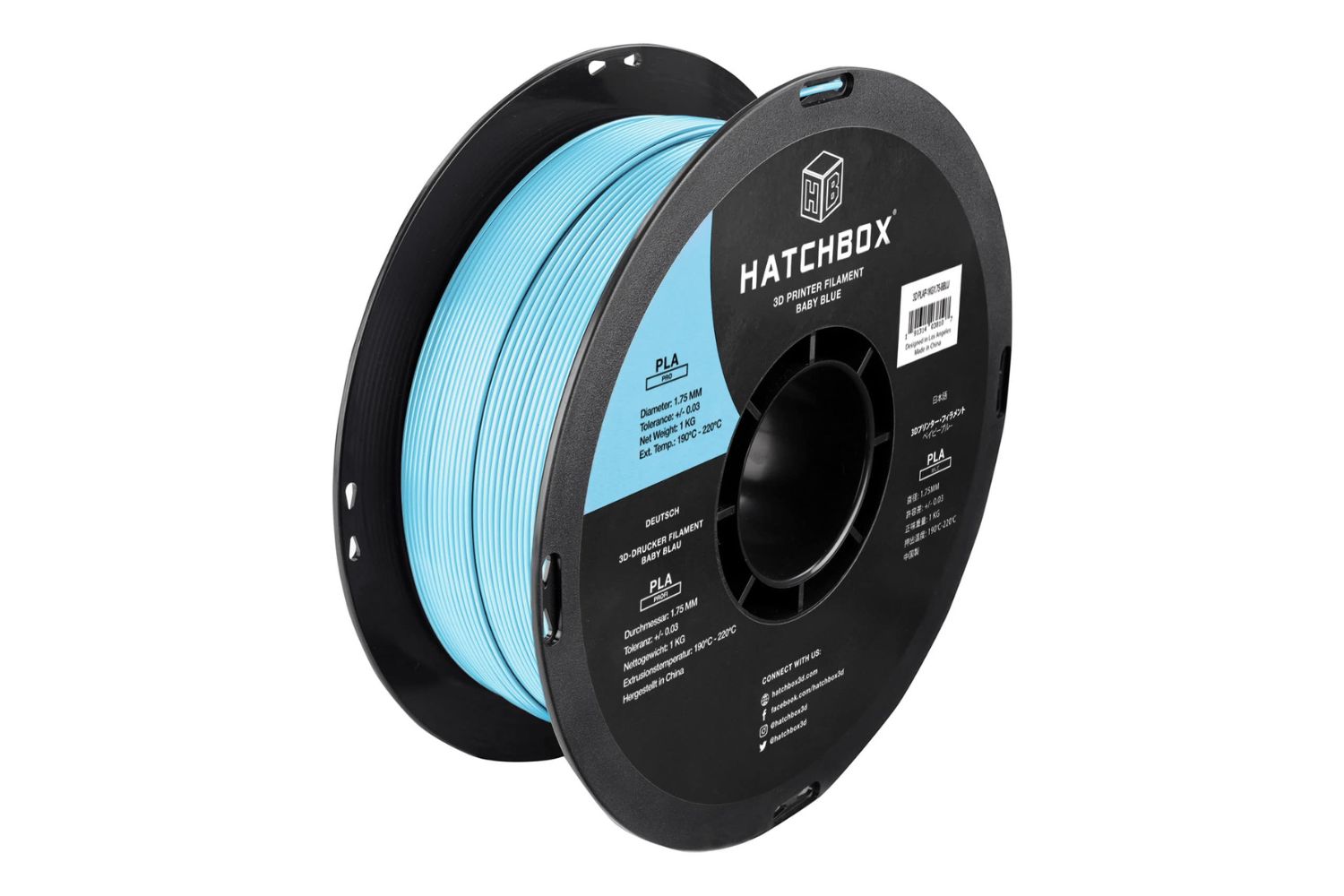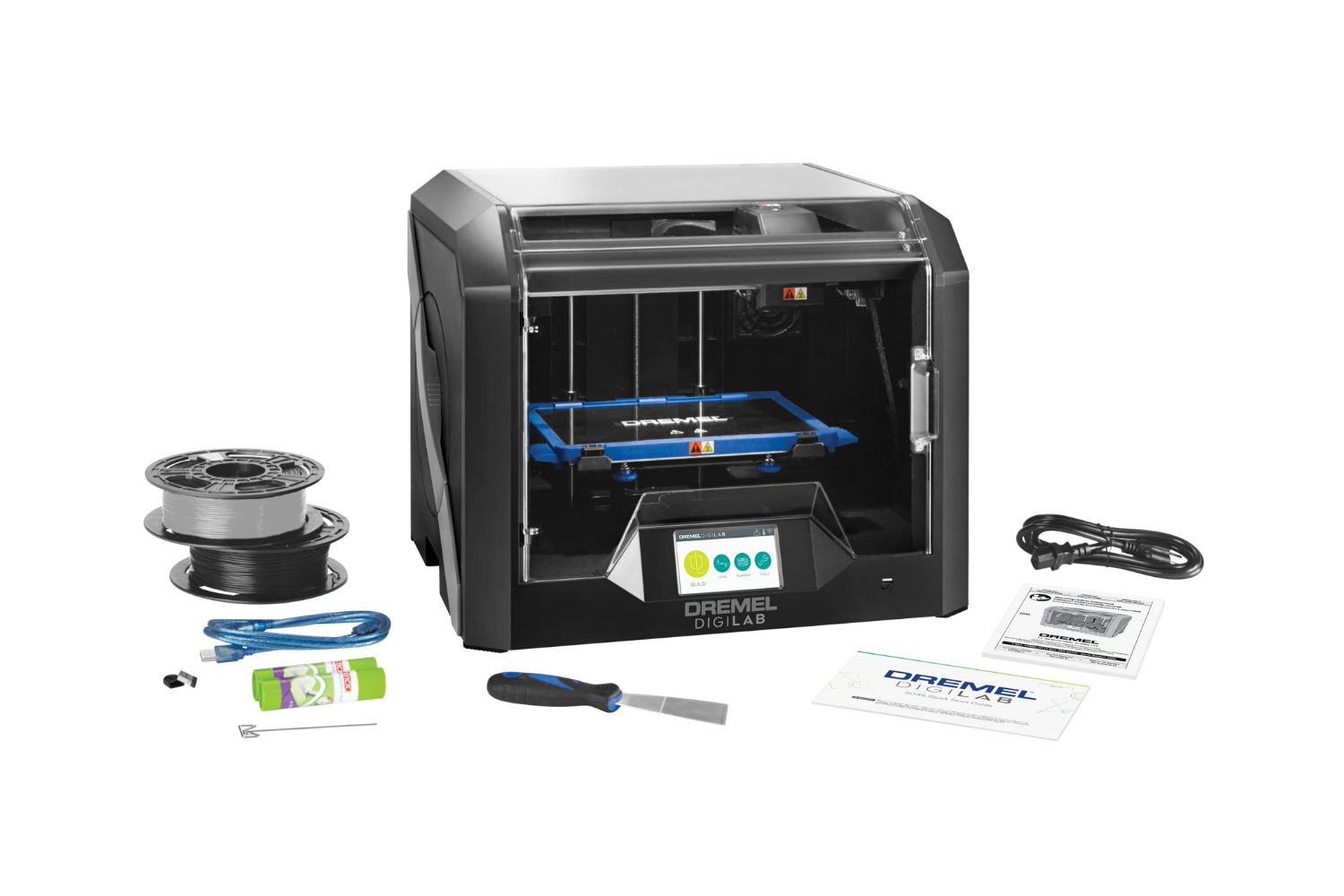Introduction
In today’s rapidly evolving technological landscape, 3D printing has emerged as a groundbreaking innovation with the potential to revolutionize various industries. From healthcare to manufacturing, the capabilities of 3D printers continue to expand, pushing boundaries and challenging conventional production methods.
A 3D printer, also known as an additive manufacturing device, constructs objects layer by layer using materials such as plastic, metal, or resin. This process offers significant advantages over traditional manufacturing techniques, including greater design freedom, reduced waste, and shorter production times.
While 3D printers have gained considerable popularity over the years, there is a growing interest in large-scale 3D printing. This refers to the ability to print objects of significant size, opening up new possibilities for industries that require oversized or complex components.
The importance of large-scale 3D printing cannot be overstated. It enables the creation of architectural models, customized furniture, prototypes, and even complete buildings. Moreover, it empowers industries to streamline their manufacturing processes, reduce costs, and expedite product development.
Advancements in 3D printing technology have driven the development of larger and more sophisticated printers. As the demand for large-scale printing grows, manufacturers are striving to create machines capable of producing increasingly larger objects with higher precision and efficiency.
However, large-scale 3D printing comes with its own set of challenges and considerations. Cost, material limitations, and the structural integrity of printed objects are crucial factors to address. Additionally, the debate on what qualifies as the “largest” 3D printer continues, as new contenders constantly emerge.
In this article, we will delve into the world of large-scale 3D printing. We will explore the features and capabilities of giant 3D printers and examine their real-world applications. Moreover, we will discuss the challenges faced by this technology and consider the possibilities it holds for the future.
What Is a 3D Printer?
A 3D printer is a device that creates physical objects by depositing layers of material on top of each other, following a digital design or model. Unlike traditional manufacturing methods that involve subtractive processes like cutting or carving, 3D printing is an additive manufacturing process. It builds objects from the bottom up, layer by layer, using materials such as plastic, metal, resin, or even biological matter.
The process of 3D printing begins with a three-dimensional digital model created using computer-aided design (CAD) software or obtained from a 3D scanning device. The digital model is then sliced into thin cross-sectional layers, and the printer utilizes this data to deposit material in a precise pattern, gradually building the object. This layer-by-layer approach allows for the creation of complex, intricate designs and structures that would be challenging or impossible to achieve with traditional manufacturing techniques.
There are several types of 3D printing technologies, each with its own unique characteristics and applications. Some of the most commonly used 3D printing processes include:
- Fused Deposition Modeling (FDM): This process involves extruding melted thermoplastic filament through a heated nozzle, which then solidifies as it cools down, creating the layers of the object.
- Stereolithography (SLA): SLA printers use a UV laser to cure layers of liquid resin, solidifying it and creating the desired object.
- Selective Laser Sintering (SLS): SLS utilizes a laser to selectively fuse powdered materials, such as plastic or metal, layer by layer, until the object is formed.
- PolyJet Printing: This process uses inkjet-like technology to deposit thin layers of liquid photopolymer that are then cured using UV light, allowing for the creation of objects with multiple materials and colors.
3D printers have a wide range of applications across numerous industries. They are used in prototyping, enabling rapid iteration and reducing development time. They also facilitate the production of customized and personalized products, from jewelry and consumer goods to medical implants and prosthetics. Additionally, 3D printers have found utility in architecture and construction, allowing for the creation of detailed models and even large-scale buildings.
Overall, 3D printers have revolutionized manufacturing processes by providing greater design flexibility, reduced waste, and faster production times. As technology continues to advance, the possibilities for 3D printing will only continue to expand, making it a truly transformative technology for the future.
The Importance of Large-Scale 3D Printing
Large-scale 3D printing plays a crucial role in pushing the boundaries of traditional manufacturing techniques, offering a multitude of benefits across various industries. The ability to print objects of significant size opens up new possibilities for sectors that require oversized or complex components.
One of the key advantages of large-scale 3D printing is the freedom it provides in terms of design. Traditional manufacturing methods often impose limitations on the shapes and sizes of objects that can be produced. With large-scale 3D printing, architects, designers, and engineers have the freedom to create structures and objects that were previously unattainable. This level of design freedom allows for the creation of intricate details, complex geometries, and organic shapes.
Furthermore, large-scale 3D printing enables the rapid production of prototypes and customizations. In industries like automotive and aerospace, where precision and customization are paramount, the ability to quickly produce scaled-up prototypes and one-off parts can significantly accelerate the development process. This agility helps companies reduce time-to-market and gain a competitive edge.
Large-scale 3D printing also offers cost-saving opportunities. By printing large objects in a single piece, manufacturing costs associated with assembly, joining, and finishing are significantly reduced. Additionally, 3D printing allows for the optimization of material usage, minimizing waste. These cost efficiencies make large-scale 3D printing an attractive option for industries that require the production of large and complex components.
In the construction industry, large-scale 3D printing has the potential to revolutionize the way we build structures. It can significantly streamline the construction process, reducing labor costs and construction time. With the ability to print entire building components, such as walls and structural elements, on-site, large-scale 3D printing offers the potential for sustainable and cost-effective construction methods.
Moreover, large-scale 3D printing opens up opportunities for innovative applications across various sectors. In healthcare, it allows for the fabrication of patient-specific medical devices, implants, and prosthetics. In the automotive industry, it enables the production of large and lightweight parts, improving fuel efficiency. In the art and entertainment industry, it facilitates the creation of large-scale sculptures and set designs. The possibilities are vast and continue to expand as the technology evolves.
Overall, large-scale 3D printing is of significant importance due to its ability to break the barriers of size limitations in manufacturing. It provides design freedom, enables rapid prototyping, reduces costs, and opens up new applications and possibilities. As this technology continues to advance and become more accessible, it is poised to reshape how we create and manufacture objects on a larger scale.
Advancements in 3D Printing Technology
Over the years, 3D printing technology has experienced significant advancements, pushing the boundaries of what is possible and unlocking new opportunities in various industries. These advancements have improved the speed, precision, and capabilities of 3D printers, making them more versatile and accessible.
One of the notable advancements in 3D printing technology is the improvement in printing speed. Early 3D printers were often slow and time-consuming, limiting their applications to prototyping and small-scale production. However, with the development of faster printing techniques, such as parallel printing and continuous printing, the speed of 3D printers has increased significantly. This allows for more efficient production processes and the ability to print larger objects in shorter time frames.
In addition to speed, advancements in 3D printing technology have focused on enhancing print resolution and precision. High-definition printing capabilities enable the creation of intricate details and complex geometries with exceptional accuracy. This level of precision is crucial for industries where precise measurements and fine details are required, such as the medical and aerospace sectors.
Another significant advancement in 3D printing technology is the expansion of printable materials. Initially, 3D printers were primarily limited to plastics, which restricted their range of applications. However, today’s printers can handle a wide variety of materials, including metals, ceramics, composites, and even biological substances. The ability to print with diverse materials has broadened the scope of 3D printing, enabling the creation of functional parts, customized products, and even living tissues and organs.
Furthermore, advancements in software and design tools have made the 3D printing process more seamless and user-friendly. CAD software has become more sophisticated, allowing designers and engineers to create complex models with ease. Additionally, the development of slicing software, which translates digital designs into printable instructions, has improved the overall efficiency and accuracy of the printing process.
One of the most significant advancements in 3D printing technology is the rise of large-scale 3D printers. Manufacturers have developed machines capable of printing objects of substantial size, ranging from architectural models to furniture to entire building components. These giant 3D printers utilize advanced robotic systems and innovative extrusion techniques to create large objects with high precision and structural integrity.
Overall, advancements in 3D printing technology have propelled this innovative manufacturing method to new heights. The improvements in speed, resolution, materials, and software tools have expanded the capabilities of 3D printing, making it a viable option for a wide range of applications. As technology continues to advance, we can expect even more exciting developments in the field of 3D printing, further revolutionizing various industries and unlocking new possibilities.
The Pros and Cons of Large-Scale 3D Printing
Large-scale 3D printing offers numerous benefits and opportunities, but it also comes with its own set of challenges and limitations. Understanding the pros and cons of this technology is crucial in determining its viability and suitability for different applications.
Pros of Large-Scale 3D Printing:
- Design Freedom: Large-scale 3D printing provides unparalleled design freedom, allowing for the creation of complex shapes, intricate details, and organic forms that are difficult or impossible to achieve through traditional manufacturing methods.
- Rapid Prototyping: With large-scale 3D printing, companies can quickly produce scaled-up prototypes, reducing development time and allowing for faster iterations and improvements.
- Cost Efficiency: Large-scale 3D printing can be cost-effective, particularly in situations where complex and oversized components are required. By eliminating the need for assembly, joining, and finishing, manufacturing costs can be significantly reduced.
- Material Optimization: 3D printing allows for precise material placement, minimizing waste and optimizing material usage. This not only reduces costs but also contributes to sustainable manufacturing practices.
- Customization: Large-scale 3D printing enables the production of customized products and components, catering to specific requirements and individual needs.
Cons of Large-Scale 3D Printing:
- Size and Capacity Limitations: While large-scale 3D printers have made significant progress, there are still limitations on the size and capacity of objects that can be printed. Printing extremely large objects may require specialized equipment, limiting scalability.
- Cost of Equipment: Large-scale 3D printers are often more expensive compared to their conventional counterparts. The initial investment required to acquire and maintain the equipment can be a barrier for some businesses.
- Material Limitations: Not all materials are suitable for large-scale 3D printing. Some materials may have limited availability or may not possess the required properties for certain applications. This restricts the range of materials that can be used, potentially limiting design options.
- Structural Integrity: Ensuring the structural integrity of large-scale 3D printed objects can be challenging. The printing process and material properties must be carefully controlled to ensure the durability and strength of the final product.
- Post-Processing Requirements: Depending on the desired finish and functionality, large-scale 3D printed objects may require post-processing, such as sanding, painting, or coating. These additional steps can add time and cost to the manufacturing process.
It is important to carefully consider these pros and cons when contemplating the implementation of large-scale 3D printing. While the technology offers numerous advantages, it is essential to assess its feasibility and suitability for specific use cases. Understanding the limitations and challenges can help businesses make informed decisions and maximize the potential benefits of large-scale 3D printing.
The Debate on the Largest 3D Printer
When it comes to determining the largest 3D printer, there is an ongoing and ever-evolving debate within the industry. With constant advancements in technology, new contenders are constantly emerging, pushing the boundaries of what is considered the “largest” in the world of 3D printing.
Traditionally, the largest 3D printers have been associated with the capability to print objects of substantial size. This includes printers used in the construction industry to create structures such as buildings, bridges, and even entire communities. These printers utilize innovative techniques, such as concrete extrusion, to deposit layers of material and build large-scale structures with precision.
However, the concept of “largest” is not solely limited to size. Some argue that the title of the largest 3D printer should be based on other factors, such as printing speed, resolution, or versatility in materials. For example, there are 3D printers that may not be physically massive but have the capability to produce highly detailed and complex objects at a rapid pace. These printers push the boundaries of what is achievable in terms of speed and precision.
Another aspect of the debate revolves around the technology utilized by these printers. Different 3D printing technologies, such as Fused Deposition Modeling (FDM), Stereolithography (SLA), or Selective Laser Sintering (SLS), offer unique capabilities and have their own set of limitations. The largest printer in terms of build volume may not necessarily be the largest in terms of the technology used or the complexity of objects it can create.
Furthermore, the determination of the largest 3D printer can also be subjective and context-dependent. Industries have varying requirements and criteria for what they consider as the largest based on their specific needs. For example, the automotive industry may prioritize large-scale production capabilities, while the aerospace industry may prioritize high-resolution printing and the ability to produce complex geometries.
While the debate on the largest 3D printer continues, it is important to recognize that the pursuit of size is just one aspect of the ongoing innovation in the field of 3D printing. As technology advances and new possibilities emerge, the definition of the largest 3D printer will continue to evolve and be reshaped. Ultimately, what matters most is the ability of these printers to meet the specific requirements of industries and deliver solutions that were previously unimaginable.
Examining Giant 3D Printers: Features and Capabilities
Giant 3D printers, designed for large-scale printing, are pushing the boundaries of additive manufacturing. These enormous machines boast impressive features and capabilities, enabling the production of objects that were previously unimaginable in terms of size and complexity.
One of the key features of giant 3D printers is their massive build volume. These printers have an extensive working area that allows for the production of objects on an impressive scale. Whether it’s architectural models, furniture, or even building components, giant 3D printers have the capacity to handle the size and complexity of these objects.
Additionally, these printers often employ advanced robotic systems and extrusion techniques to ensure accuracy and precision during the printing process. With high-resolution capabilities, they can produce objects with intricate details and complex geometries. This level of precision is crucial for industries where fine tolerances and superior surface finishes are required.
Giant 3D printers also come equipped with sophisticated control systems that monitor and regulate various parameters to ensure the quality of the printed objects. They employ advanced sensors, feedback mechanisms, and automated calibration processes to maintain optimal printing conditions throughout the production process. These features contribute to the accuracy and reliability of the printed objects.
Furthermore, giant 3D printers often boast versatility in materials. They can handle a wide range of materials, including plastics, metals, composites, and even bio-compatible substances. This enables the production of functional parts with specific mechanical properties and opens up opportunities for various industries, from aerospace to healthcare.
Another notable capability of giant 3D printers is the ability to create large objects in a single print, reducing the need for assembly and post-processing. This streamlines the manufacturing process, improves efficiency, and reduces overall production costs. Additionally, some printers have integrated multi-material capabilities, enabling the simultaneous deposition of different materials to create objects with varying properties or colors.
It is important to note that giant 3D printers may vary in terms of their specific features and capabilities based on the technologies they utilize. For example, printers using concrete extrusion technology are capable of constructing large-scale structures, while printers employing powder-based techniques can produce intricate metal components. These variations cater to the specific needs and requirements of different industries and applications.
The continuous enhancement and advancement of giant 3D printing technology are expanding the possibilities for large-scale additive manufacturing. As these printers continue to evolve, we can expect to see even more impressive features and capabilities that will further revolutionize manufacturing processes and enable the creation of larger, more complex objects.
Real-World Applications of Large 3D Printers
Large 3D printers have found a wide range of applications across numerous industries, pushing the boundaries of traditional manufacturing methods and unlocking new possibilities. The ability to print objects of significant size has opened doors to innovative solutions and has transformed various sectors.
In the architectural and construction industry, large 3D printers have revolutionized the way we build structures. These printers can fabricate entire building components, such as walls, columns, and facades, with incredible precision and efficiency. Printing large-scale structures on-site reduces construction time, labor costs, and material waste. It also allows for the creation of complex and sustainable designs, enabling architects and designers to bring their visionary concepts to life.
Another notable application of large 3D printers can be seen in the automotive industry. These printers have the capacity to fabricate large and intricate vehicle parts, such as car body panels or even entire car frames. By utilizing lightweight materials like carbon fiber or composite materials, 3D printed car components can reduce weight, improve fuel efficiency, and enhance overall performance.
The aerospace industry has also embraced large 3D printing technology for the production of aircraft components. These printers can create intricate and lightweight parts, such as engine components or structural elements, using advanced materials like titanium alloys or high-performance polymers. Not only does this reduce weight and fuel consumption, but it also simplifies the manufacturing process and allows for more design flexibility.
Large 3D printers have also found applications in the healthcare industry. They can fabricate personalized prosthetics, implants, and medical devices with precise specifications to match individual patient needs. This customization improves patient outcomes and reduces the time and cost associated with traditional manufacturing methods. Additionally, it enables the creation of patient-specific anatomical models that aid in surgical planning and medical education.
The entertainment industry has also embraced large-scale 3D printing for set design and special effects. These printers can create large-scale props, sculptures, and intricate set pieces with precise details, bringing imagination to life with unparalleled speed and accuracy. These 3D printed elements enhance the visual impact of movies, theater productions, and exhibitions.
Large 3D printers have even found applications in the marine industry, where they can fabricate large boat components, such as hulls or structural parts. By using durable and lightweight materials, these printers enable the construction of vessels that are more fuel-efficient and environmentally friendly.
The applications of large 3D printers are constantly expanding as technology advances. From architecture to automotive, aerospace to healthcare, and even entertainment and marine industries, these printers are reshaping the way we produce objects on a large scale. As the technology matures and becomes more accessible, we can expect to see further integration and innovation in an even wider range of industries and applications.
Challenges and Future Possibilities
While large-scale 3D printing offers many benefits and exciting applications, it also comes with its own set of challenges. Addressing these challenges and exploring future possibilities are crucial for the continued advancement and adoption of this technology.
Challenges:
One of the primary challenges in large-scale 3D printing is the cost associated with the equipment and materials. The initial investment required to acquire and maintain large 3D printers can be significant, making it a barrier for some businesses. Additionally, depending on the materials used, the cost of 3D printing filaments or powders can also be higher compared to traditional manufacturing materials.
Another challenge lies in the structural integrity of large 3D printed objects. Ensuring consistent strength and durability across the entire printed structure can be complex. Factors such as material composition, layer adhesion, and print orientation need to be carefully controlled to ensure the final product meets the required standards. Failure to address these challenges can result in weakened or compromised parts.
Large-scale 3D printing also faces limitations related to the size and capacity of the printers. Printing extremely large objects may require specialized equipment and facilities. Additionally, transportation and logistics pose challenges when dealing with oversized printed components. Finding efficient ways to transport and assemble large printed objects remains an ongoing concern.
Future Possibilities:
Despite these challenges, the future of large-scale 3D printing holds immense potential. As technology continues to evolve, we can expect to see progress in addressing these challenges and further pushing the boundaries of what is achievable.
One area with promising future possibilities is the development of new materials specifically designed for large-scale 3D printing. Research is ongoing to improve the capabilities of existing materials and to develop new ones with enhanced properties, such as strength, flexibility, and sustainability. These advancements will expand the range of applications and increase the overall performance of 3D printed objects.
Advancements in robotics and automation are also expected to play a significant role in the future of large-scale 3D printing. Integrating intelligent robotic systems into the printing process can enhance accuracy, efficiency, and scalability. Automated calibration, adaptive manufacturing, and real-time monitoring systems will further improve the quality and reliability of large 3D printed objects.
Collaboration between industries and research institutions will be vital in unlocking the full potential of large-scale 3D printing. By sharing knowledge and expertise, we can tackle complex challenges and develop innovative solutions. Partnerships between manufacturers, material suppliers, and designers will pave the way for more efficient and cost-effective large 3D printing processes.
Looking ahead, large-scale 3D printing has the potential to revolutionize manufacturing, construction, healthcare, and many other industries. By addressing the current challenges and embracing future possibilities, we can unlock new dimensions of creativity, efficiency, and sustainability with this transformative technology.
Conclusion
Large-scale 3D printing has emerged as a groundbreaking technology that is transforming various industries. The ability to print objects of significant size opens up new possibilities for architecture, automotive, aerospace, healthcare, and many other sectors. By pushing the boundaries of traditional manufacturing methods, large-scale 3D printing offers design freedom, rapid prototyping, cost efficiency, customization, and material optimization.
Advancements in 3D printing technology, including the development of giant printers, have paved the way for more precise and efficient production capabilities. These printers boast features such as extensive build volumes, high-resolution printing, advanced robotic systems, and versatility in materials. As technology continues to advance, it is anticipated that the capabilities of large-scale 3D printers will only continue to grow.
However, large-scale 3D printing also faces challenges, such as cost, structural integrity, size limitations, and post-processing requirements. Addressing these challenges is crucial in optimizing the technology and unlocking its full potential. Collaboration between industries and research institutions, along with ongoing developments in materials and robotics, will play a pivotal role in shaping the future of large-scale 3D printing.
In conclusion, large-scale 3D printing offers a wide range of benefits and opportunities while also posing unique challenges. As we navigate the possibilities and limitations of this technology, it is important to embrace innovation, collaboration, and continuous improvement. Large-scale 3D printing has the potential to revolutionize manufacturing processes, accelerate product development, and open up new avenues for design and customization. With further advancements and the exploration of future possibilities, we are witnessing the dawn of a new era in manufacturing, where large objects can be printed with precision, efficiency, and unparalleled creativity.







